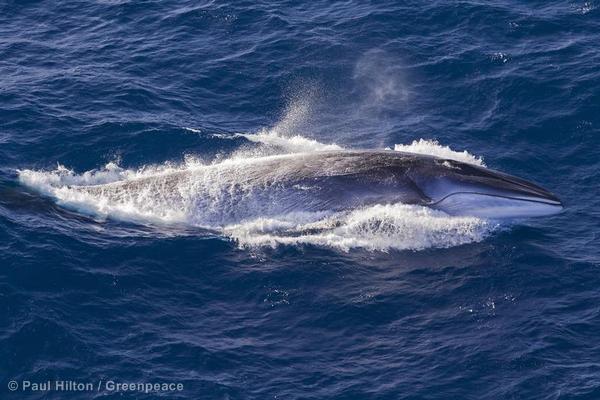Ways to identify this species: black to dark grey on top, white on the underside, long slender body with a narrow, triangular jaw.
Minke Whale Biology
- Adult males measure up to 31 feet and females up to 33 feet. Both males and females weigh about nine tons.
- Minkes are known for their curiosity and sometimes like to swim beside ships. They can keep up with the ships because they are fast swimmers and can reach speeds of 21 mph.
- Minke whales feed mainly on krill in the Southern Hemisphere and on small schooling fish.
- In the feeding grounds of the Antarctic, minkes inhabit the pack ice—large blocks of ice on the surface of the ocean generally found in polar regions
- Minkes typically travel by themselves, but sometimes can be found in pairs or small groups.
Threats to Minke Whales
- Minke whales are the most widely hunted species in our oceans and continue to be threatened by commercial and “scientific” whaling. Commercial whaling was banned by international law in 1986.
- Pollution and climate change also pose a threat to the minke whale’s habitat. Scientists think that a sharp contraction in sea ice in the Antarctic due to global warming is the likeliest explanation for the population of minke whales being cut in half in less than a decade.

